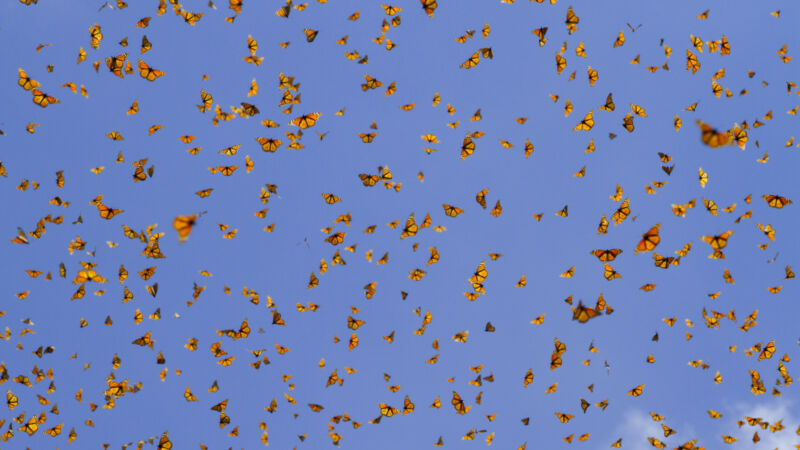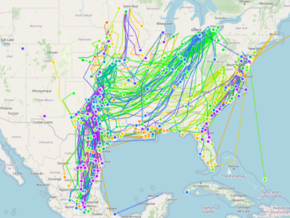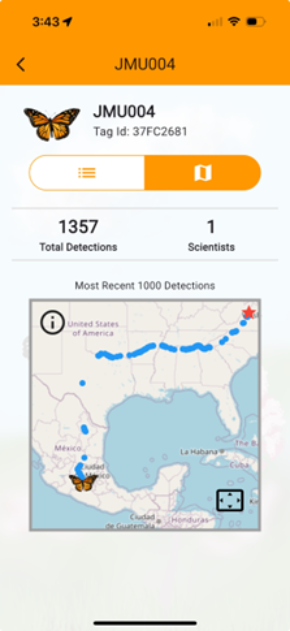
Written by Dr. Karen Oberhauser, Cover photo by Court Whelan
Monarchs: In Mexico!
A month ago, the leading edge of the migration had moved well into Mexico, and I noted that the very first monarchs should begin arriving at their winter homes right on time, around the Day of the Dead celebration on November 2, with larger numbers a week or so behind. Just like clockwork, this is what happened. Estela Romero sent a report to Journey North of monarchs in the skies above the small town of Angangueo, Michoacán, on November 4. The sanctuaries of El Rosario and Sierra Chincua in the Monarch Butterfly Biosphere Reserve officially opened to the public on November 22.

Late Season Monarchs in the North
Even as monarchs were arriving in their Mexican overwintering sites, observers were continuing to see the butterflies in the northern reaches of their range. Journey North reporter Jeffrey J. saw an adult and a fifth instar (on butterfly weed) in Harrison Ohio on November 4, and Laura saw four adults in Point Pelee National Park on November 1. The last monarch reported to WisconsinButterflies this year was on November 5, in Milwaukee County. But this butterfly had just emerged and had deformed wings; the last monarch in good condition was reported by observer Lindsey Dalton at Olbrich Botanical Gardens in Madison on November 4.

While these late-season monarchs have a low chance of making it successfully to their wintering sites, their presence this late in the season is normal. Eastern migratory monarchs that emerge as adults on or after about August 15 are in reproductive diapause and will delay reproductive maturity until the following spring. This is the migratory generation. But adults that emerge before mid-August will lay eggs over the course of their month-long lifespan. Because these late eggs, larvae and pupae are exposed to cool conditions, they take longer to develop. They emerge as adults well into October or even early November. Some of these late monarchs make it to Mexico, some may become part of the winter breeding generations in the southern US, and many don’t survive because of cold temperatures and reduced nectar availability.
New Method for Tracking Migrating Monarchs
The biggest news in Monarch Science this fall is the deployment of BlūMorpho transmitters on migratory monarch butterflies. Just over 400 monarchs were outfitted with tiny transmitters in spots throughout their migratory range and tracked through amazing new technology. This technology allows smartphones and other Bluetooth-enabled devices to track the tagged butterflies and resulted in our first-ever real-time pictures of monarch migration routes.
You can join Project Monarch by downloading the free app. For more details, check out the project website or read the NYT article about it.


If you’d like to help monarchs, one of the best things you can do is provide habitat for them. Check out the Monarch Joint Venture and Xerces websites for great advice on how to do this. The Monarch Joint Venture has a free webinar series with exciting speakers every month, on topics ranging from fascinating biology to practical conservation tips.
